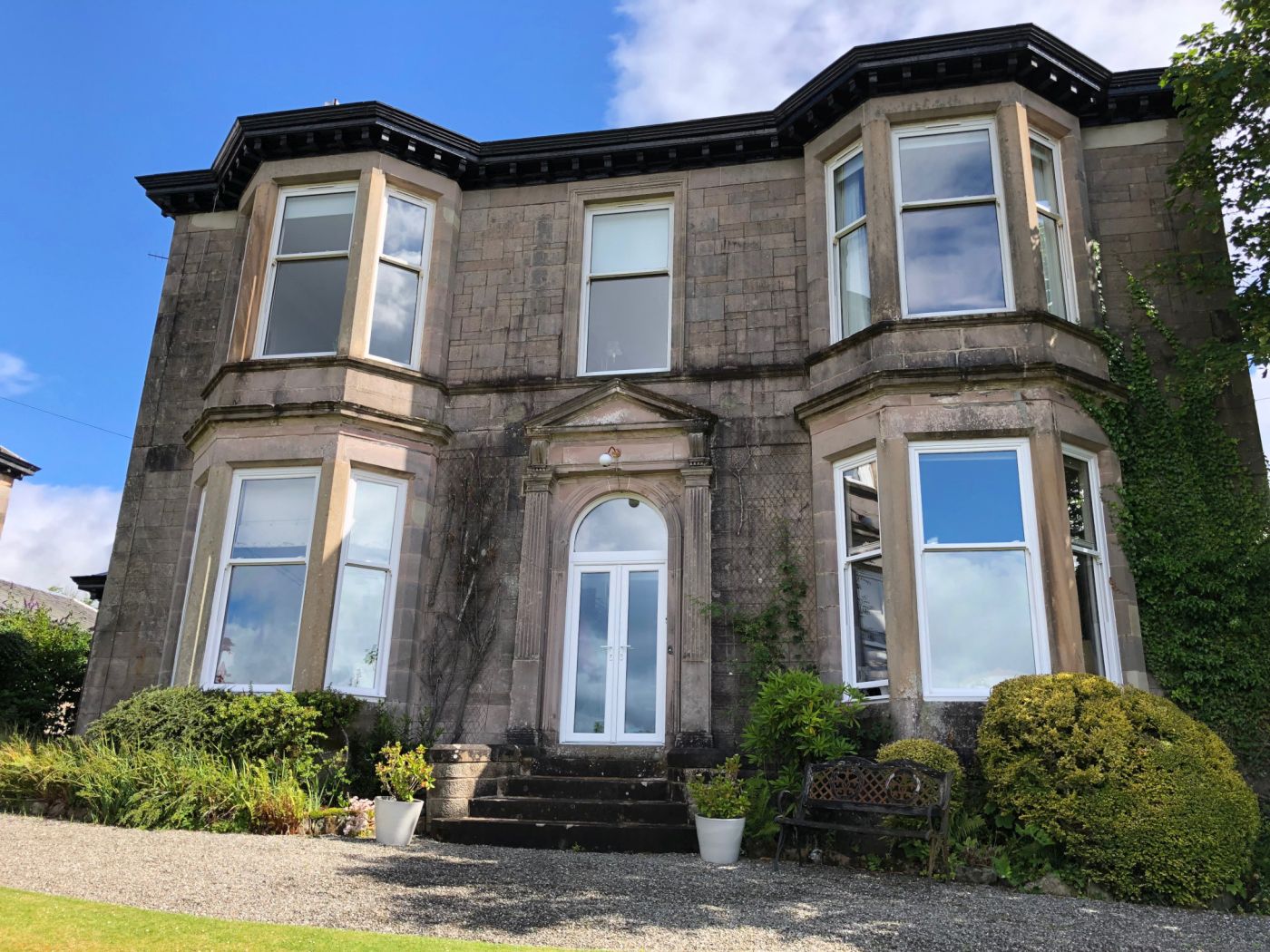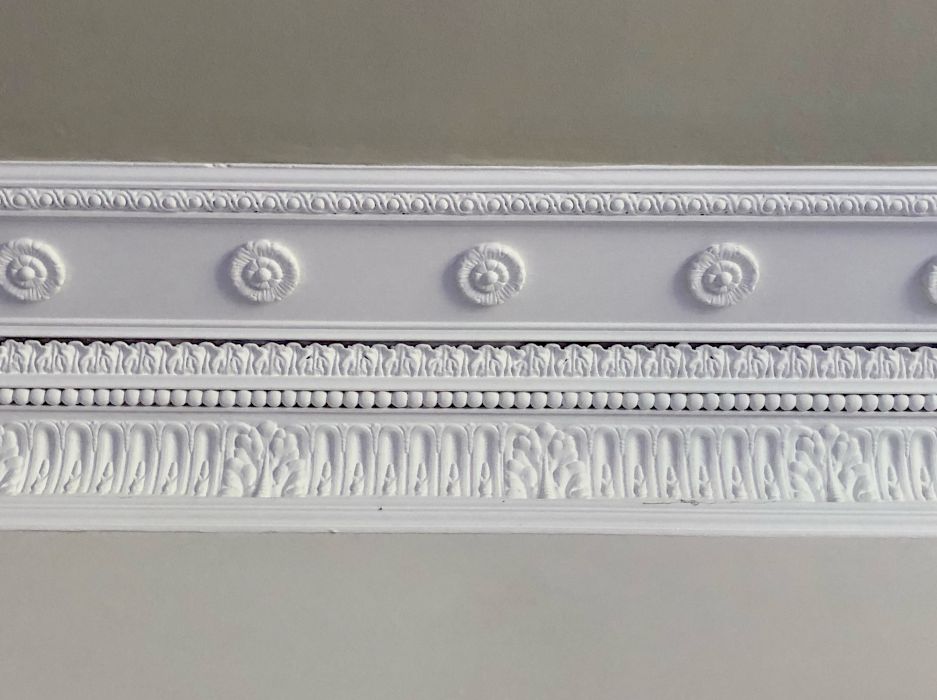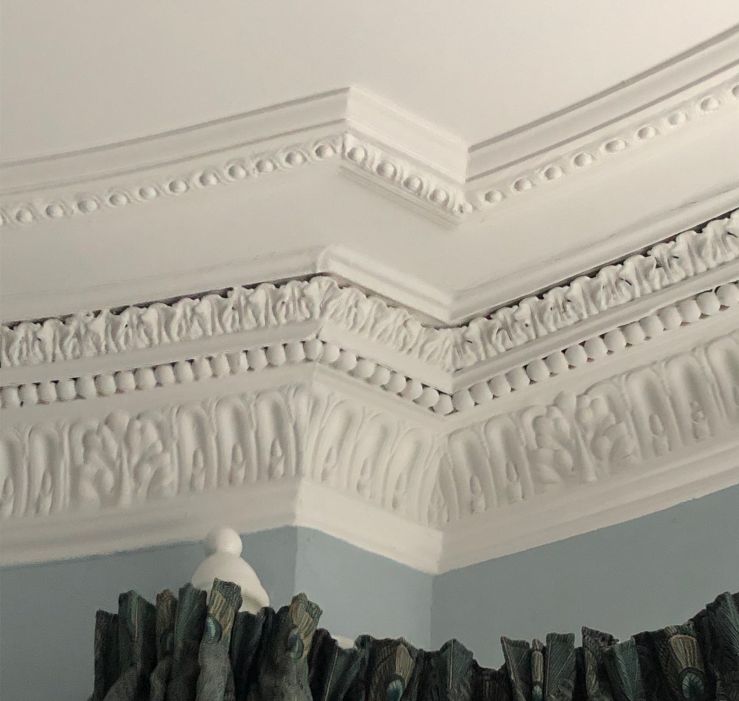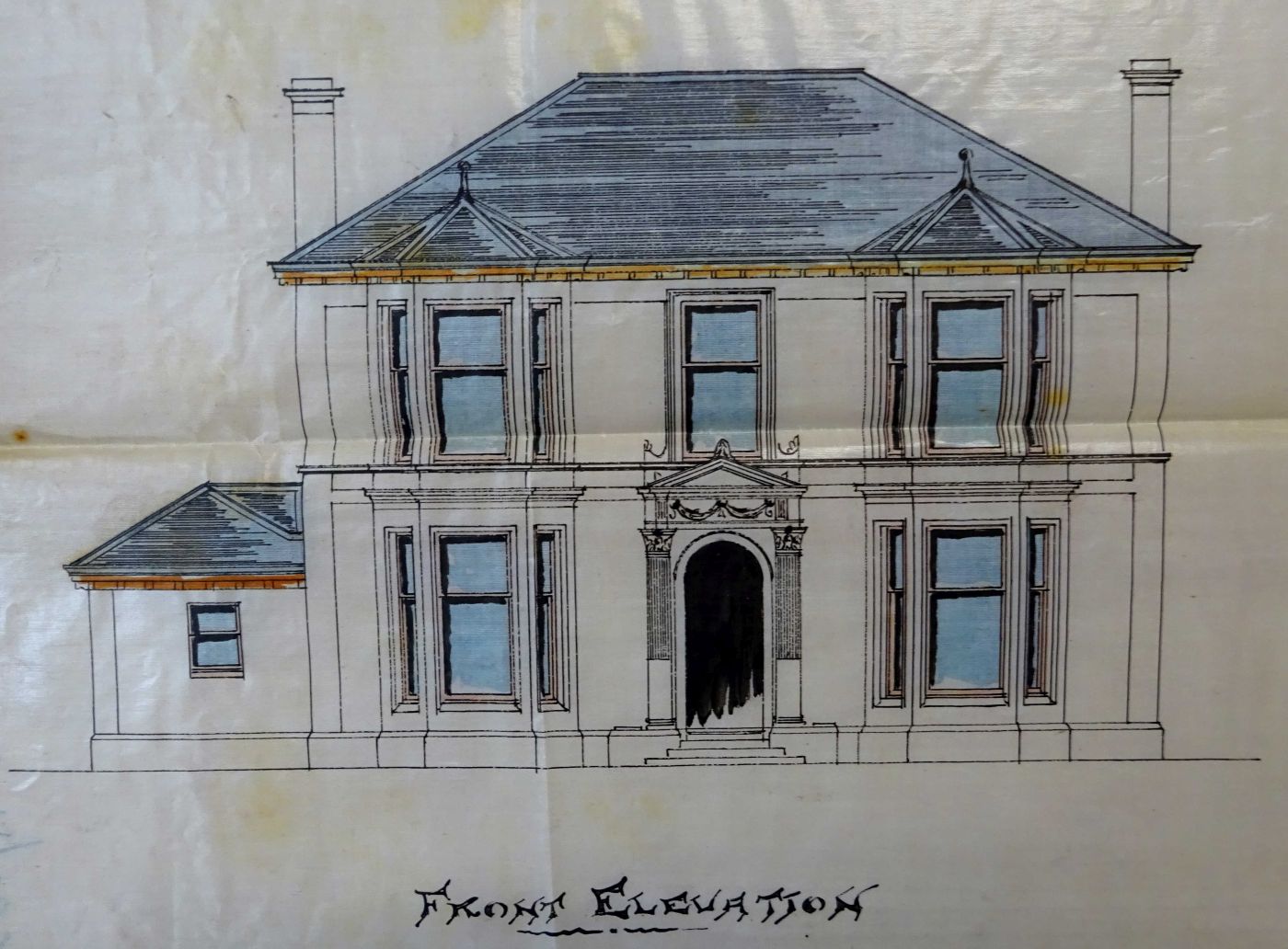Ailsa Boyd
Published: 6 July 2022
July 2022
Research on Robert Duncan (2022)
I have been researching the architect of my own house, in Glasgow, built in 1889 by Robert Duncan (1841-1928), and the award enabled me to visit houses in Helensburgh and undertake genealogical research into who lived there. Duncan designed all types of buildings, from stables to tenements, warehouses to churches, and most of my street in Crosshill. Many of his buildings are familiar Glasgow landmarks, eight of them listed, and I believe his work should be better known. The Dictionary of Scottish Architects led me to a group of domestic buildings in Helensburgh: a pair of villas, major alterations to a Gothic mansion, Towerville. By researching the occupants and their relationships, this small group of houses demonstrates the links of business, patronage and architecture in the mercantile class of the West of Scotland at the end of the 19th century.
Helensburgh is a small town on north bank of the Clyde in Argyll, which became a commuter suburb when the railway expanded along the coast in 1857, leading to a doubling of the population to 5,000. The town is laid out on a grid pattern of 2-acre plots, and within these walled gardens, Victorian sandstone villas hide behind rhodendron bushes, monkey puzzle trees and other mature foliage. Visiting behind the gates is essential for viewing the architecture. Original plans in the Burgh of Helensburgh Dean of Guild Court archive enabled me to identify the location of two villas designed in mirror-image by Duncan, at the top of Henry Bell Street: Broomside and Fairhall, built in 1890.

Although both houses had been divided, with many original features removed, I was still able to compare them with the original drawings. The original layout of Broomside matches the plans, with the kitchen, laundry, etc. in a single storey building jutting out to the left (not visible from the angle of my photo). But comparing the drawings with what was actually built demonstrates where economies of time or money are often made in buildings – the decoration. The simple finials on top of the bays and the window proportions are the same, but the swags, acroterion and Corinthian pilasters around the front door have been drastically reduced to the simpler Doric order. The chunky, low balustrade of the steps has an unusual curved front edge, with detailed rustication. The skill required of the craftsman to extract a satisfying result from the meagre details of the elevation is very evident.


Access inside the houses was useful for comparing the decoration with what I know from my own house. For example, on the left is decorative plasterwork in what was originally the dining room of Broomside (the house was split into two flats in the 1930s). On the right is the bay windowed upstairs bedroom of my slightly smaller house, which was built the previous year. They are identical, although my house lacks the rosettes, indicating that if not the same workers, the same moulds were used in both Glasgow and Helensburgh. Interestingly, the design does not seem to have been tied to the purpose of the room.
Access to genealogical records (including valuation rolls, census, birth/marriage/death certificates) revealed the original occupants of the houses. I knew from the plans that the alterations at Towerville were for John Henderson Esq., but was it a coincidence that one of the pair of villas was occupied by Miss Jane Henderson? One of the owners I visited let me examine the original deeds for the house, which included the will of Thomas George Bishop in 1922, where John Henderson was one of his executors. In census and valuation rolls, they are listed as grocers or tea merchants, and the company of Bishop and Henderson was better known for the name that adorned its many grocery shops across Scotland and the north of England, Cooper & Co. I knew from probate records that the value of T. G. Bishop’s estate was £457,787: 8: 6, an enormous amount for 1922, and the tea merchants he founded in 1871 was enormously successful. Today, Glaswegians will recognise the name from the pub at 499 Great Western Road, where the elaborately decorated bar was once the shop floor. This flamboyant building with its tall clocktower, was designed by Robert Duncan in 1886 for Cooper & Co. and is now B-listed. Along with 500-515 Sauchiehall Street (1898), also designed for Coopers and now the Genting Casino, these are Duncan’s largest buildings. Between 1886-1903 he built or altered 13 buildings for Coopers, including stables, several warehouses in Howard Street, landmark buildings and these villas in Helensburgh.
Genealogical records finally revealed that not only was John Henderson in business with Thomas G. Bishop, but had married his elder sister Robina Bishop. The families were very intertwined, as Thomas married Elizabeth Henderson, the younger sister of John who lived at Towerville, and Jane Henderson, then in her sixties, the first occupant of Broomside, just a ten minute walk from Towerville estate. A brief look at valuation rolls for 1895-6 reveals that Cooper & Co. also owned eleven houses on Marine View, Helensburgh, rented out to artisans and workers. There is more work to be done identifying the impact Cooper & Co. had on the built landscape, apart from their more obvious shops, warehouses and tearooms, many of them the product of a decade of a close working relationship with an architect at the height of his powers.
First published: 6 July 2022
<< Past awards


